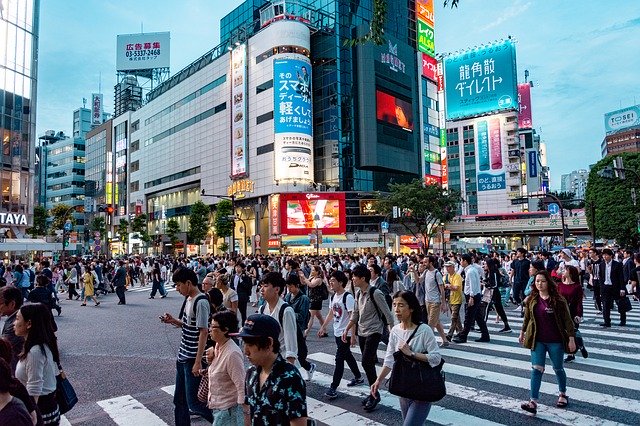
Thousands of people from the United States and around the world will be heading to the Summer Paralympic and Olympic Games in Tokyo, Japan, next year. With thousands of wheelchair users expected to arrive, Tokyo has been working hard to become a more wheelchair-friendly city.
Accessibility throughout Japan has dramatically improved over the past several decades, with non-step buses, facilities that are easy to navigate in a wheelchair, wheelchair-accessible public restrooms, wider elevators with lowered buttons, and so much more. Yet despite all the improvements geared to those who require a wheelchair to maneuver around, many challenges remain.
Navigating Tokyo
Trains and subways stations are wheelchair friendly, with escalators, elevators, and stairlifts, but these improvements are mainly in the city centers. Staff at train stations help with boarding and disembarking by using ramps and special lifts. Wheelchair users should call ahead to have staff available. If you plan to travel long distances by rail, you should reserve a wheelchair-friendly seat in advance.
Buses are mostly non-step or kneeling, and many have priority seating areas for wheelchair users. Taxis that feature individual rotating seats or ramps for more comfortable boarding have increased, but many are still hard to board. And if you’re using a non-foldable wheelchair, there won’t be a place to carry it.
There are rental car companies that offer an wheelchair accessible van, and most are at similar pricing to standard vehicles. Surprisingly, most of the companies that rent them don’t advertise it on their English websites – only on their Japanese websites. So, to book a wheelchair accessible van, you’ll need to call the rental company directly.
Exploring the City
Regardless of where you stay, new hotels are required by law to be wheelchair accessible. Many of Tokyo’s older hotels are undergoing necessary renovation to remove barriers for those with disabilities. Here’s something else to keep in mind: many websites only have complete information on accessibility in Japanese, not in English. You’ll have to dig a little deeper to find those websites.
When touring the city, you’ll find that most sidewalks are at grade level or have cuts in the curbs that make it much easier to navigate than many other cities around the world. Most tourist attractions, including museums and restaurants, are accessible to those requiring a wheelchair for mobility. Many cultural heritage sites have accessibility features, but they’re not always obvious, so ask before you go. Unfortunately, many of the older shrines and temples are at the top of a stairway, so they’re not accessible.
Public restrooms are wheelchair accessible, often with an entirely separate room for people with disabilities. They’re located at train stations, tourist attractions, and many public buildings. There’s even an app that shows where the accessible restroom locations.
As for shopping, Tokyo has an abundance of shopping centers, unique shops, and even shops at train stations that have exceptional selections. Top malls have a variety of designers and international clothing lines, like Coach and Gap. While most stores don’t have dressing rooms, those that do are wheelchair friendly. If you’re into electronics, be sure to visit “Akihabara,” which is also called “Electric Town.” You’ll be able to test-drive various electronics, video games, and many other “toys.”
Of all the international cities, Tokyo offers a variety of shopping, cultural, and culinary experiences you won’t find anywhere else. And thanks to the 2020 Paralympic Games, Tokyo is becoming a more wheelchair-friendly city.




